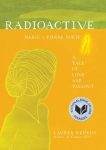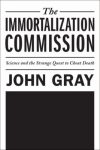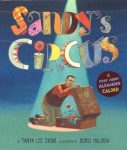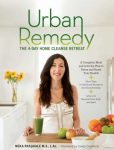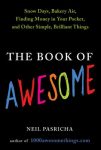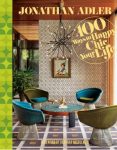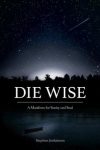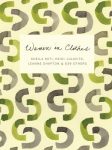Brenda’s Pick: GET UP! (CD)
What a combination and collaboration of music! When I first listened to this album produced by Ben Harper, who wrote most of the songs, and featuring Charlie Musselwhite, now 68, I felt transported to a grassy hillside at a Music Festival somewhere, just laying back and listening to two fantastic musicians. The album which was released in 2013 is dedicated to Solomon Burke and John Lee Hooker which already gives some insight into the blend of blues, rock and gospel. With Charlie Musselwhite’s harmonica and Harpers phrasing, they create a song list that is unbeatable. The mood shifts from track to track from “Don’t look twice” to “I don’t believe a word you say” and “Get up!” to “All that matters now” but each tune is tight and the two of them play together like they were meant to, getting toes tapping and bodies swaying. Musselwhite on the harmonica adds dimension and it is like another voice beside Harper’s…a true pair of bluesman. |
Brownie’s Pick: Radioactive: Marie & Pierre Curie, A Tale of Love and Fallout by Lauren Redniss
Proof in the title, this book glows. Visually stunning, the art work is rich and sumptuous. It is a joy to turn each page. Her life’s achievements are astonishing. Marie Curie won two Nobel Prizes and invented the first mobile X-ray machines said to have helped over a million wounded soldiers in WW1. Spurned by the scientific community because she was a woman and spurned by France because she was a Polish Jew, she was a humble hard working mother and scientist. This book is a very brief view of her early life, easy to read and very moving. Redniss’ artwork will colour your dreams. |
David’s Pick: The Immortalization Commission: Science and the Strange Quest to Cheat Death by John Gray
John Gray is a British philosopher whose main area of focus is the failure of political and cultural narratives to provide us with comforting stories about our place in the world. This short but wide-ranging book deals with two strategies for overcoming the damage done by Darwin’s theories on the search for life beyond the grave: in the West, through crack-brained attempts at spiritualism; in Soviet Russia, through a cult of the leader which dragged H.G. Wells and many others into a futile campaign to preserve Lenin’s corpse. The book is about much more than this summary suggests and is a fast and amusing romp through a few dark corners of 20th Century thought.
|
Deb’s Pick: Sandy’s Circus by Tanya Lee Stone
If you are young and love circuses, read this story. If you are old and have always wanted to step into the shoes of a vibrant artist, read this story. And if you are an artist, it is mandatory to read this story! Tanya Stone tells the tale well. Alexander “Sandy” Calder didn’t think he was an artist until he was hired by a newspaper to draw the Ringling Brothers and Barnum and Bailey circus. Inspired, he travelled overseas and walked the streets of 1926 Paris with “a roll of wire around his shoulder and a pair of pliers in his pocket.” He twisted the wire into astonishing portraits of his friends. The circus was probably still in the back of his mind when he created his first “little wire lion.” It was the start of a special circus that would cross the ocean and back many times. Alexander Calder was a master of springs, strings and levers. He took ordinary objects and turned them into extraordinary art. He made use of the air around him to breathe life into his creations. They danced! They pranced! They played! The first mobiles were created by Calder. Sandy’s Circus is illustrated by the incredible Russian illustrator, Boris Kulikov. One review said: What’s with these Russian illustrators? They’re starting to make the homegrown variety look bad. Sure, Kulikov lives in Brooklyn, but you know what they say. You can take the boy out of the Hermitage but you can’t take all that Eastern iconography out of the boy. It is TRUE! This amazing book owes its humour and colourful nuances to Boris Kulikov.
|
Joanne’s Pick: Urban Remedy by Neka Pasquale
In the olden days, way before my time, everyone in the family would receive a dose of castor oil and sulphur as a spring cleanse! This wonderful book has an easy to follow step by step plan for a spring cleanse or ideas to help you break bad eating habits and improve health and nutrition. In the four day detox using food as medicine, the author outlines a detailed day to day eating plan centered around whole foods and juices. She also includes a shopping list for the program, suggestions on how to schedule your time for exercises, stretches, meditation and relaxing detox baths. There are over 75 delicious recipes also in the book and suggestions on how to use food as medicine for common ailments. I found the recipes were delicious and the book was full of very helpful advice. This detox is an indulgence and an excuse to pamper yourself. |
Leanne’s Pick: Book of Awesome by Neil Pasricha
The Book of Awesome is not a book meant to be read cover to cover. It’s one of those books that you can read a few pages of whenever you need a laugh, a smile, or a pick-me-up. The book consists of a list of everyday awesome things, each with its own excerpt or story. You often overlook awesome little things, like the smell and sound of a campfire. Or you remember a word that’s been on the tip of your tongue for so long, find out your birthday is on a Friday or Saturday, or get in a line before it gets really long. It’s a fun book; and a reminder of all the awesome things in life!
|
Leanne’s Pick: 100 Ways to Happy Chic Your Life by Jonathan Adler
This book has been described as a style bible, a decorating tome, and self-help guide all rolled into one. It is written by celebrity designer Jonathan Adler, and the aim of the book is to get you to embrace and surround yourself with the things that make you happy. |
Mark’s Pick: Great Catastrophe: Armenians and Turks in the Shadow of Genocide by Thomas De Waal
This volume was written and published for the 100th anniversary of the Armenian Genocide. Rather than simply describing events that took place one hundred years ago, it traces how the memory of these events has been shaped both inside Turkey and among Armenians throughout the world. If you don’t know much about the Armenian Genocide, this is an excellent starting place to learn more. It clearly describes both what happened in 1915 and why its memory is so contentious today. |
Sandra’s Pick: Die Wise: A Manifesto For Sanity and Soul by Stephen Jenkinson
Last July the Library sponsored two events featuring the dynamic and incredibly unique author and teacher Stephen Jenkinson. He left most of us with a lot to think about and many deeply personal questions to ponder. His new book, Die Wise, is a perfect follow up or introduction if you missed him. As Jenkinson says, what he has to share, “is for those of us who will fail to live forever.” Like his teaching style, Die Wise offers deep wisdom and true stories from Jenkinson’s two decades of working with dying people and their families, but with prose so beautiful and lyrical that the insights are both subtle and hard hitting. He covers a range of topics including hope, quality of life, euthanasia and suicide, the work of dying, who the dying and dead are to us, and what dying asks of us all. Jenkinson writes, “High-tech health care has become an undeclared war on dying itself, nothing less.” His book is an invitation to take back the right and responsibility of death by learning the skill of dying. I recommend reading it in small doses, with many renewals and re-check outs, because it’s more than a book. Die Wise is a journey itself. |
Sonia’s Pick: Women in Clothes by Sheila Heti
I’m taking a risk this month and recommending a book that I haven’t read, at least not beyond the first 20 pages (and it’s 515 pages long!). But I like its premise: that there’s way more to say about the clothes women choose to wear or admire on other women than “does it look good on me/her?“ This isn’t a book of fashion “Do’s and Don’ts.” It doesn’t try to define style once and for all. Sasha Weiss summed it up in The New York Times Book Review: “Women in Clothes” is part advice manual, part anthropological study, part feminist document. The interviewees are young girls (the youngest is 5), old women (salty and dignified matriarchs), famous women (Kim Gordon, Lena Dunham), religious women, trans women, designers, choreographers…artists, Asian garment workers, and even a man or two (the art historian Alexander Nagel has one of the book’s most sophisticated definitions of style: “The state in which one feels the least separation between one’s character and one’s body”). The one negative review I read of this book criticized it for not being properly exhaustive/multicultural with regards to the women interviewed (even though one of the first interviews is with an Islamic woman who ultimately chooses to wear the hijab). Fair enough. The premise of Women in Clothes may be a little grandiose, its editors a tad hipster, and the lens somewhat slanted to the North American. Does this make it boring? Based on what I read in the first 20 pages, doubt it. |


